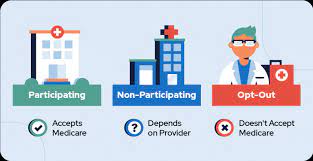We wanted to take a few minutes and educate our visitors about some of the challenges you could encounter during the provider enrollment process. These challenges apply whether you are a facility enrolling a new provider or a physician or nurse practitioner attempting to enroll with the insurance companies. They are also challenges experienced during the enrollment process regardless of where you are located.
Enrollment Challenge #1 :
Getting through to the Provider Enrollment Department
We have enrolled thousands of providers over the years and one of the most challenging aspects has to reside in the customer service/provider enrollment department of the insurance companies. Poor customer service is in many cases the #1 roadblock to physicians and providers attempting and succeeding with enrollment process.
Oftentimes, providers will get a completely different answer when going through the 800 number vs dealing with the local provider rep. Unfortunately, many insurance companies are doing away with their local provider reps in exchange for a team of customer service reps(often in different countries) that have little to no idea about the local market. With COVID, we have seen a dramatic falloff in terms of customer service with some payers eliminating their phone service reps entirely.
What you should do:
There is no easy way around the numerous roadblocks offered by payers and its really a matter of who will give up first and how resourceful you can be. If you are struggling reaching someone to help you, one thing that we find helpful is to reach out to colleagues to see if they have an alternative contact. We had a situation recently where a physician was denied a contract due to a panel closure, we asked him to ask some of his colleagues if they knew anyone and it just so happened that a close friend of his was neighbors with an executive at the company. What do you know, the payer a couple weeks later opened the panel for this physician.
Enrollment Challenge #2:
Understanding the Insurance Contracting Process
In addition to the customer service issues, the next hurdle that most providers encounter during the process is in the contracting process. Many times providers will complete the enrollment/credentialing process but run into road blocks during the contracting process. Contracts are mailed or emailed to the provider with little to no explanation of exactly how they will be compensated and how it compares to market rates. Because of this, many providers sign contracts that end up paying them 10-15% less than what would be considered fair market rates. Rates are not standardized which means payers have the opportunity to pay you more or less depending on how generous they are feeling.
What you should do:
Our recommendation is that you take each contract and evaluate your top CPT codes and the proposed fee schedule based on current year Medicare. Before signing any agreement, you need to know precisely how that payer will be reimbursing you for your codes and how that compares to the current Medicare fee schedule.
ENROLLMENT CHALLENGE #3:
BEING PATIENT BUT PERSISTENT THROUGH THE CREDENTIALING PROCESS
The credentialing process can be painfully slow and incredibly frustrating. Even for our team of specialists, a day doesn’t go by where a payer is claiming they didn’t receive something or all of the sudden adding an additional 45 days onto the process for no apparent reason. Now with COVID and the resulting staffing shortages, the insurance companies have something else to blame delays on.
The timeframe for credentialing with insurance companies used to take around 60-90 days whereas now, the payers are taking almost twice that on average (120-150 days). Waiting this long can be incredibly frustrating and a real challenge to stay patient.
What you should do:
While waiting for the payers, your job is to stay persistent contacting the payers(we recommend every couple weeks) requesting an update on your status. It’s important to stay on top of this in the event they need additional information. The last thing you want is for them to reject your application because of a deficiency and make you start the entire credentialing process over.
Updated: 9/19/2022






